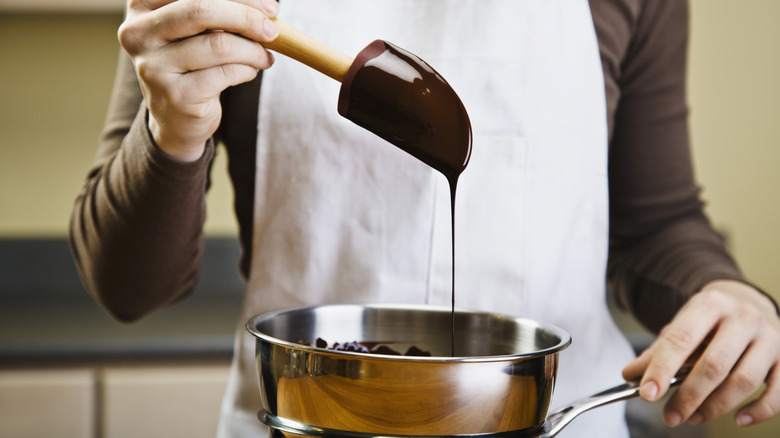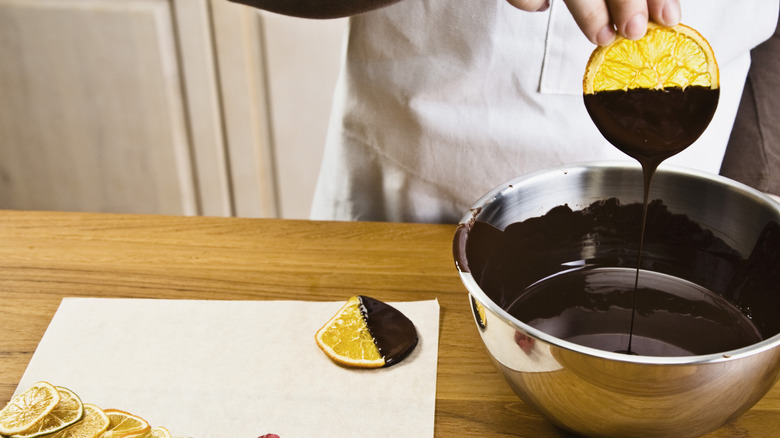Why You Need To Put In The Extra Work And Temper Your Chocolate
We may receive a commission on purchases made from links.
Temper is one of those words with a zillion different meanings. If you're a person, it refers to your mood, while a well-tempered clavier is either a collection of compositions by Johann Sebastian Bach or an in-tune antique keyboard. Even in cooking, tempering has different meanings, since tempering a steak so it can cook more evenly simply involves bringing it to room temperature, whereas tempering chocolate ... can be kind of complicated. But still quite necessary since this process of carefully controlling the temperature as chocolate melts is important for both the texture and appearance of your homemade candy.
There are two main reasons why chocolate needs to be tempered. The first has to do with replicating that smooth, shiny finish that you see when you open a box of chocolates or even unwrap a candy bar. If you just melt chocolate the usual way and use it to dip a strawberry or a cake pop, the finish will be duller, more matte than high-gloss. Should you take the time to temper the chocolate before dipping, your end product will look a lot more professional.
The second reason, however, has a much more practical application. Tempered chocolate, like M&Ms, will "melt in your mouth, not in your hand." This means that eating your candy will be a lot less messy, and maybe for once you won't be stuck Googling how to get chocolate stains out of a white shirt.
How to temper chocolate
The main piece of equipment you need to temper chocolate is a good candy thermometer. (The Taylor stainless steel candy thermometer with pot clip can be purchased from Amazon for $8.99.) You'll also need the right kind of chocolate. Either plain chocolate bars or chips designed for candy making will work, but chocolate chips meant for baking aren't a good choice since they're meant to be melt-resistant.
One method of tempering chocolate involves using a double boiler, either a purpose-built one or one jury-rigged by suspending a heat-proof bowl over a pot of boiling water. Grate or finely chop two-thirds of whatever amount of chocolate needs tempering, then allow it to melt until it reaches a temperature between 110 and 115 degrees Fahrenheit. Take the bowl or top part of the double boiler off the heat and allow the melted chocolate to cool to anywhere between 95 and 100 degrees Fahrenheit. Stir in the rest of the chocolate until it melts; then, your chocolate will be well-tempered.
Of course, there's a also a shortcut for chocolate tempering as endorsed by Ina Garten (amongst others). Instead of a double boiler, you melt two-thirds of your chocolate in the microwave on 50% power for intervals of one minute, stirring between each zap. Once the chocolate has melted, check the temperature. The thermometer should read between 110 and 110 degrees Fahrenheit. If it doesn't, microwave the chocolate a bit longer. Stir in the remaining chocolate and check the temperature again. If it reads anywhere between 84 and 91 degrees Fahrenheit, you should be good to go.

